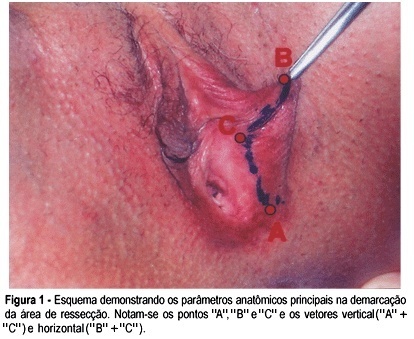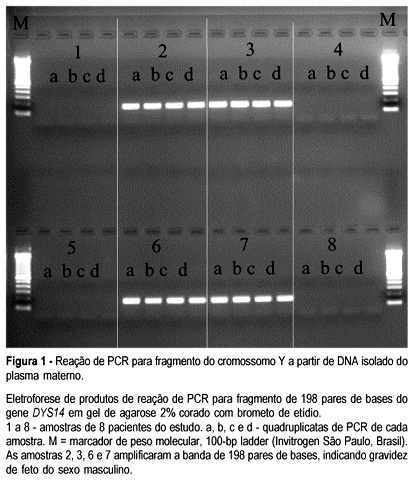Summary
Revista Brasileira de Ginecologia e Obstetrícia. 2004;26(9):735-739
DOI 10.1590/S0100-72032004000900010
PURPOSE: to describe the use of a superior labial flap for the treatment of labia minora hypertrophy. METHODS: from May, 1998 to July, 2002 10 patients with labia minora hypertrophy were submitted to reduction of the labial excess through the resection of the inferior segment by an L-shaped incision. The transversal incision was done starting on the labial external border towards the hymenal caruncles, and the longitudinal incision, from that point until near the furcula. The border of the superior flap was then lowered to eliminate the defect caused by the inferior resection. RESULTS: within an average period of 45 days after surgery, the patients were satisfied with its esthetical and functional aspects. The local sensibility did not change. Only two cases presented complications: one case with perineal ecchymosis and the other with partial, early unilateral dehiscense. Infection, necrosis and late dehiscense were not observed. CONCLUSION: the utilization of the superior flap in the correction of labia minora hypertrophy produces a satisfactory esthetical and functional result with few complications and easy resolution.

Summary
Revista Brasileira de Ginecologia e Obstetrícia. 2003;25(9):687-690
DOI 10.1590/S0100-72032003000900011
PURPOSE: to evaluate a new method of fetal sex determination through the analysis of DNA from maternal plasma. METHODS: peripheral blood (10 mL) was drawn from pregnant women in different gestational ages. Plasma was separated and isolated DNA was submitted to the polymerase chain reaction (PCR) with primers from the Y-chromosome-specific gene DYS14. RESULTS: two hundred and twelve patients were enrolled. PCR results were compared to either confirmatory ultrasonography and/or birth. Agreement was observed in 209 samples. Discordant plasmas had a PCR result of female fetus and all of them were derived from mothers with less than 8 weeks of pregnancy. CONCLUSION: the PCR method developed for fetal sex determination has excellent sensitivity and specificity, permitting its use as a routine test. A PCR result of male fetus presents a higher confidence than a female one, specially in early gestational periods. New applications employing fetal DNA from maternal plasma are being developed and hopefully will allow noninvasive diagnosis of several conditions.
